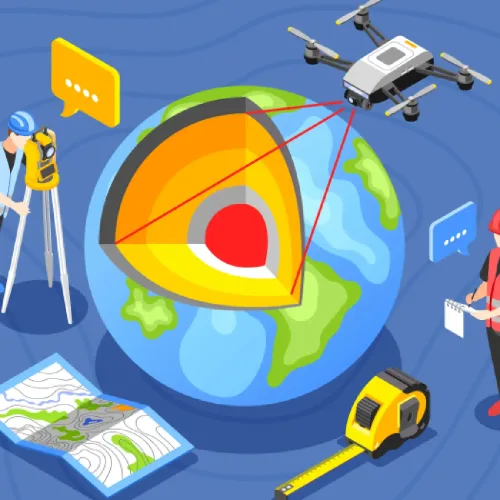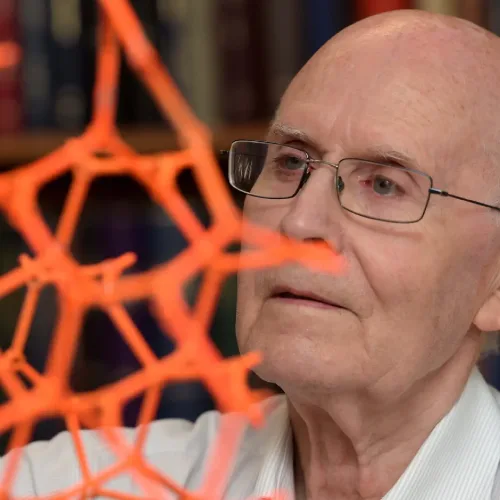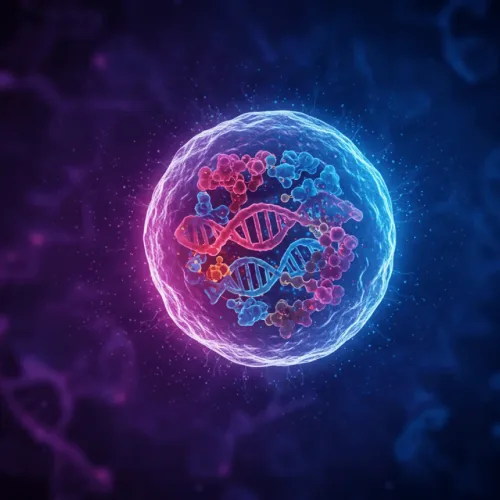Artificial intelligence (AI)-infused CRISPR has been changing cell biology as we know it. And thus, 2025 will be a year of innovation. With CRISPR, we have changed the game for genetic modification by providing precise edits at a DNA base level. This platform is now benefiting immensely from the unfolding of AI into this process.
What makes this union so novel? The traditional CRISPR approaches often need many iterations. They also require trials to identify the correct target sites for genome editing. AI, which processes vast amounts of data and can accurately predict outcomes for relevant tasks, mitigates these issues. The partnership means higher accuracy for gene editing. Going further, the possibilities open up from precision medicine to regenerative therapies.
For example, genetic diseases like sickle cell anemia, which are driven by mutation. Patient-specific genetic data is what AI is able to review. By doing so, CRISPR tools can correct the mutation much faster. Which guarantees a better success rate and fewer adverse side effects. This synergy is a scientific achievement. Millions are hopeful it will lead to life-saving treatments for many people.
AI’s Role in Elevating CRISPR’s Potential
1. Data-Driven Optimization of CRISPR Experiments
CRISPR is highly efficient in guiding the right gRNA to specific DNA sequences. AI algorithms will analyze the genetic data. They will then determine which sequences are the right ones to edit as efficiently as possible.
- Example: AI tools Deep CRISPR uses machine learning to score off-targets. They ascertain that edits are real and not off-target. This way will reduce unwanted conversions that may kill the cell.
- Impact: Faster, safer, and already efficient editing, especially in highly complex genomes (e.g., human).
2. Modeling Cellular Responses to Genome Edits
Among the biggest challenges in genetic editing is anticipating how cells will respond after being cut by CRISPR. AI helps to fill this gap by mimicking cellular-level processes post-edit. This allows researchers to iterate their experiments before actually performing them.
- Example: AI Forecasts Downstream Consequence of Gene Editing for Metabolic Disorder Target, This Aids Researchers in Predicting Side Effects. AI also pinpoints the bypass pathways that may render the treatment useless.
3. Enhancing Scalability in Research
AI optimizes not just single experiments but speeds the whole research process at large. AI offloads the rote tasks, like screening thousands of gRNAs, for example, and it evaluates experimental results. This automation allows the scientists to scale experiments without any loss in accuracy.
- Example: AI-enabled robots doing high-throughput experiments in the genome editing labs. They perform CRISPR edits on hundreds at once. You save time and materials by doing that process.
Advanced Applications in Cell Biology

The union of AI and CRISPR is bringing cell biology to a future filled with possibilities. With this partnership, they are decoding the complicated work cell biology does. It also creates therapies that are nothing but science fiction. Both are unlocking the doors for transformational applications.
1. AI-Assisted Functional Genomics
Functional genomics, of course, involves the function of genes at a biological functioning level. Still, however, it will take time to reckon with the actual function for some genes. Through AI, we help with speeding this process up; using gene expression profiles and pathways, we can discover interactions.
- Example: AI is being used to identify regulatory elements through analysis of noncoding regions of the DNA. These are where the regions of “junk DNA” used to be that regulated gene expression when genes were first discovered. CRISPR guides are driven by AI. They tell us to edit these sites with the help of these guides. The editing is taken care of; properly assess their contribution to health and disease.
- Impact: A deeper comprehension of the cellular basis of things like cancer and neurodegenerative diseases.
2. Dynamic Cellular Modeling
The editing by CRISPR is just the tip of the iceberg. A critical component is what cells do post these edits. AI enables researchers to create time-varying simulations. They are essentially time lapses of what the actual cellular changes look like. These simulations are incredibly valuable. They guide what a single gene perturbation can do in bigger systems.
- Example: CRISPR-modified insulin-producing beta cells in the pancreas. Researchers used AI to train a computer on how those edits would affect pancreatic beta cells. However, that process has its place in diabetes research.
- Impact: The more bang from the bucks with a reduced chance of an unknown side effect in interventions.
3. Cell Therapy Development
CRISPR toolkit of cell therapies to make highly targeted immune cell edits (e.g., T-cells) for diseases like cancer. AI: Weaves this into a faster iterative process. It utilizes better gene-editing tools and predicts what is likely to be the best therapy.
- Example: Optimized the AI-driven CRISPR-engineered CAR-T cells for better identification of cancer cells with less on-target off TEFs.
- Impact: Safer, more effective therapies in less time.
Case Studies and Breakthroughs
The applications of AI-CRISPR integration in real world applications are highlighted in transformative ways. These breakthroughs show what can be done when rare diseases get their due and when pioneering personalized treatments take center stage.
1. Rare Genetic Disorders
AI-CRISPR has particularly useful in taking on rare diseases for which there are few treatment options.
- Example: the researchers conducted a groundbreaking study. AI was used to identify the best of the CRISPR edits. The cystic fibrosis mutation was corrected in these edits. In lab grown lung cells, the combination of AI optimized gRNA using CRISPR led to successful restoration of normal protein function.
- Impact: A possible road to be to ride out genetic disorders for which there was once no treatment.
2. Advancing Personalized Cancer Therapies
AI and CRISPR are changing the way we treat cancer, providing personal ways of combatting the disease.
- Example: In one case, CRISPR was ‘guided’ to shut down cancer-driving genes targeted by a patient’s tumor using AI. The therapy stopped tumor progression. It also caused the least amount of damage to healthy cells.
- Impact: Cancer treatments that are more effective and less toxic to individual patients.
3. Accelerating Vaccine Development
Faster vaccine development in global health crisis is due to AI CRISPR.
- Example: While the COVID-19 pandemic was raging, researchers used AI to help design CRISPR tools for quick viral RNA detection and neutralization. This approach, however, has been subsequently extended to make vaccines against other emerging pathogens.
- Impact: It is a scalable and agile solution for future pandemics.
Advancing Agricultural Biotechnology

Outside the healthcare industry, both AI and CRISPR factor into the future of farming. Today, scientists can redesign the genes of crops. Their aim is to increase production. They also focus on protecting crops from pests and increasing their ability to withstand unfavorable conditions. AI would indicate genetic changes that would help growers get a better yield.
Main Developments
- Drought Resistance: Modified plants thrive in arid conditions.
- Nutritional Enhancements: Crops deliver more essential nutrients.
Challenges and Future Directions
One of the largest potentials is the marriage between CRISPR and AI, but it also comes with major challenges and ethical stipulations. It is critical to address these issues to how responsibly and equitably use these game changing technologies.
AI and CRISPR are possessed untapped potential. Interacting with biology will become more powerful as their (tools’) technology develops. Researchers want to refine these technologies so that they can be used with much safer, more effective applications.
“Science knows no country because knowledge belongs to humanity, and is the torch which illuminates the world.” — Louis Pasteur
AI and CRISPR in 2025
| Application Area | AI Role | CRISPR Role |
|---|---|---|
| Genetic Disease Therapy | Predicts mutations and effects | Edits faulty genes |
| Cancer Treatment | Analyzes tumor genetic profiles | Targets cancer-specific mutations |
| Agriculture | Models of ideal genetic traits | Modifies crop genes for better yields |
Conclusion
AI and CRISPR represent a historic collaboration in cell biology. These tools help scientists solve problems faster and more accurately. By 2025, they won’t just define research. They will create the measurable benefits humanity needs to survive in the real world.
References
- Doudna, J. A., & Charpentier, E. (2014). The new frontier of genome editing with CRISPR-Cas9. Science, 346(6213), 1258096.
- Yin, H., & Kanasty, R. L. (2014). Non-viral vectors for gene delivery. Nature Reviews Genetics, 15(8), 539-551.
- Bai, Y., et al. (2021). CRISPR-based gene editing: A revolution in personalized medicine. Frontiers in Pharmacology, 12, 710073.
- Silverman, S. K. (2020). Artificial intelligence for CRISPR gene editing. Nature Reviews Molecular Cell Biology, 21(11), 679-688.
- Ernst, J., et al. (2020). The ethics of CRISPR technology: A call for responsible use. Bioethics, 34(5), 439-449.
- Shao, S., et al. (2022). AI-driven CRISPR applications: Transforming genetic medicine. Frontiers in Genetics, 13, 760872.
- World Health Organization (WHO). (2021). Gene Editing and Its Potential in Health. Gene Editing and Human Health.
- Cyranoski, D. (2018). The ethics of human gene editing. Nature, 553(7689), 159-161.




